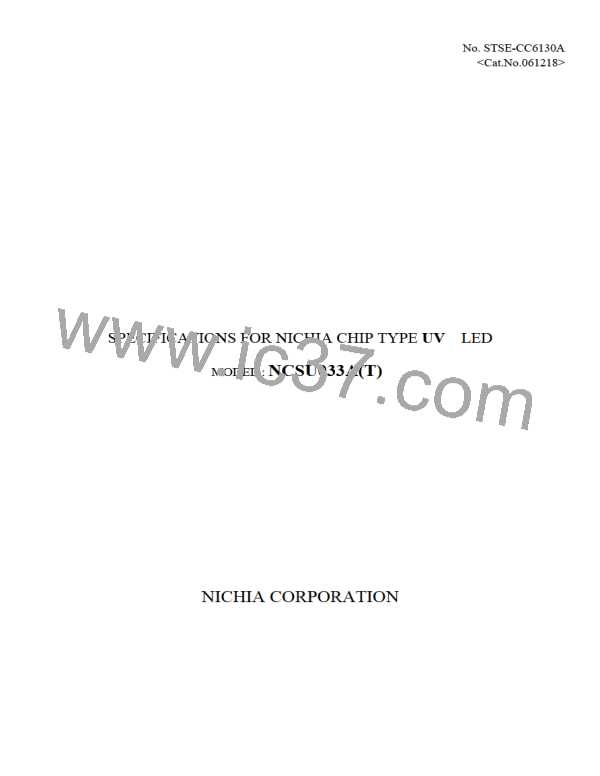Nichia STSE-CC6130A
<Cat.No.061218>
(4) Soldering Conditions
· The LEDs can be soldered in place using the reflow soldering method.
Nichia cannot make a
guarantee on the LEDs after they have been assembled using the dip soldering method.
· Recommended soldering conditions
Reflow Soldering
Lead Solder
120 ~ 150°C
Lead-free Solder
180 ~ 200°C
Pre-heat
Pre-heat time
Peak
120 sec. Max.
240°C Max.
120 sec. Max.
260°C Max.
temperature
Soldering time
Condition
10 sec. Max.
refer to
10 sec. Max.
refer to
Temperature - profile 1. Temperature - profile 2.
(N2 reflow is recommended.)
ꢀ Although the recommended soldering conditions are specified in the above table, reflow
soldering at the lowest possible temperature is desirable for the LEDs.
ꢀ A rapid-rate process is not recommended for cooling the LEDs down from the peak temperature.
[Temperature-profile (Surface of circuit board)]
Use the conditions shown to the under figure.
<1 : Lead Solder>
<2 : Lead-free Solder>
2.5 ~ 5°C / sec.
1~ 5°C / sec.
240°C Max.
260°C Max.
10sec. Max.
Pre-heating
10sec. Max.
Pre-heating
2.5 ~ 5°C / sec.
1~ 5°C / sec.
120 ~ 150°C
180 ~ 200°C
60sec.Max.
60sec.Max.
Above 200°C
Above 220°C
120sec.Max.
120sec.Max.
[Recommended soldering pad design]
Use the following conditions shown in the figure.
8 .4
4 .2
2 .8
(Unit : mm)
· Occasionally there is a brightness decrease caused by the influence of heat or ambient atmosphere
during air reflow. It is recommended that the User use the nitrogen reflow method.
· Repairing should not be done after the LEDs have been soldered. When repairing is unavoidable,
a hot plate should be used. It should be confirmed beforehand whether the characteristics of the LEDs
will or will not be damaged by repairing.
· Reflow soldering should not be done more than two times.
· When soldering, do not put stress on the LEDs during heating.
· After soldering, do not warp the circuit board.
(5) Cleaning
· Please do not use ultrasonic cleaning, which may reduce the reliability of the product.
-5-

 NICHIA [ NICHIA CORPORATION ]
NICHIA [ NICHIA CORPORATION ]